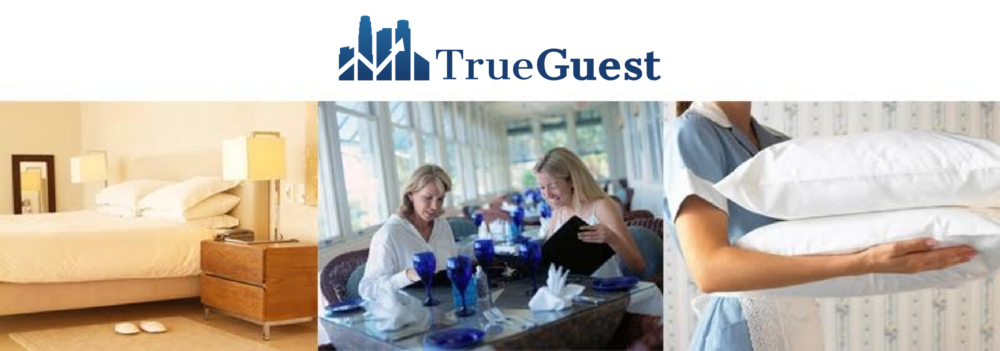
Section 6: Common Types of Theft – Not Ringing Transactions and Pocketing Cash
Section Goal: Implement standards to eliminate employee theft caused by not ringing transactions and pocketing cash
This is the simplest method and probably the most common of theft occurrences because of its ease. It consists of serving a beverage and taking cash without ringing the transaction up in the POS system. The common example of this type of theft includes placing cash paid for a beverage directly into the tip jar or into the cash drawer without accounting for the sale in the POS. Bartenders will also sometimes “preview” the transaction to the customer by entering the item initially into the POS system. They will then cancel the transaction and hit the “No Sale” button to open the cash drawer.
♦
Internal Controls to prevent bartenders from not ringing transactions and pocketing cash:
- Provide a hotel-issued cash drawer and do not allow commingling of revenue and gratuities. Bartenders should be provided a change bank issued by the hotel, similar to front desk staff. Many hotels require bartenders to bring their own cash to use as a bank. In this situation, the hotel has no control over that bank and will not know if the bank is ever accurate. With a hotel-provided bank, you can then disallow bartenders to mix gratuities with the hotel bank/revenues. This allows random bank audits (see #4) to be done and helps prevent this type of theft. Each bartender should have their own cash drawer that they are responsible for or a rotating bank that is checked in and out for each shift. Bartenders should not share cash drawers if you have more than one bartender working at a time.
- Require your bartenders to enter each served drink into the POS system immediately. Bartenders should be required to enter each drink as it is served into the POS immediately after serving. This should be the case whether the guest has a tab or not. This prevents drinks from being forgotten and provides a telltale sign if something unusual is happening.
- Require your bartenders to present a receipt after each transaction (paying or not). In addition to #2 above, receipts should be provided after each beverage is ordered. If a guest has a tab open, an updated receipt should be provided in front of the guest after each order. If a guest does not have a tab open, a receipt should definitely be presented upon payment. This allows random spot checks of tabs to be done and ensures that receipts are presented every time.
- Conduct random bank audits by matching total cash sales with actual cash in the cash register. Random bank audits should be conducted often enough that every bartender is audited at least once per week. Approach the bartender with a replacement bank, print a shift sales report, and verify that the bank contents match the sales report. Complete the bartender’s daily drop while he/she continues to serve customers. If the bank is over/under, document according to your normal cash over/short policy.
- Place the bartender’s tip jar away from the cash register. Tip jars should be at least 5 feet away from the cash registers. This will make it more difficult for bartenders to commingle tips and revenues or transfer cash between cash drawers and tip jars. Also, make sure that the tip jar is a one-way tip jar. Cash should only go into the tip jar and never come out until the end of the shift.
- Position the POS terminal so that guests can see transactions being entered. Most bars have the POS screen positioned towards the bar so that the bartender must turn their backs to use the register. This helps on two fronts; first, all guests can see their transactions rung up, and second, it is tougher for the bartender to see who is watching him or her ring up the transaction, making it less likely that they will risk using POS manipulation. If your bar design does not allow the terminal to be placed this way, consider installing a display arm that can be positioned to face the guest similar to ones in retail stores.
- Install security cameras pointed towards every cash register. You can always go back and refer to your tapes if necessary. There are also new systems available that show the POS transaction details on the security footage.
- Do not allow the “No Sale” button on the POS system to be used. Most POS systems show “NO SALE” very largely on the computer screen when it is used for a reason. There should be no reason to ever use this button that opens the cash drawer without entering a transaction. If change is requested by a guest, then have your bartender make change out of the tip jar, or have a manager witness the change transaction. No sale button pushes should be tracked and researched.
♦
Click here to continue with the Common Types of Theft
♦
Your progress so far: 1.Introduction, 2.Understanding Budgeted Cost, 3.Inventory Inaccuracies, 4.Perpetual vs. Periodic Inventory, 5.Poor Pour Practices, 6.Causes of Internal Theft, 7.Common Types of Theft, 8.Self Assessment, 9.Review and Conclusion
♦

